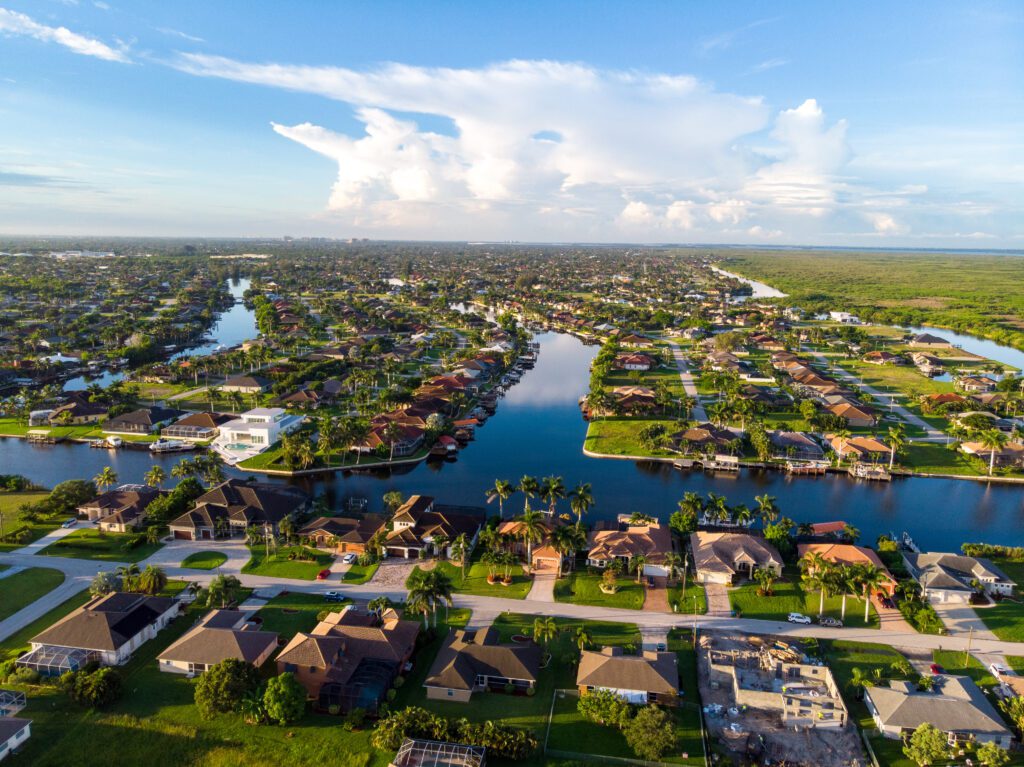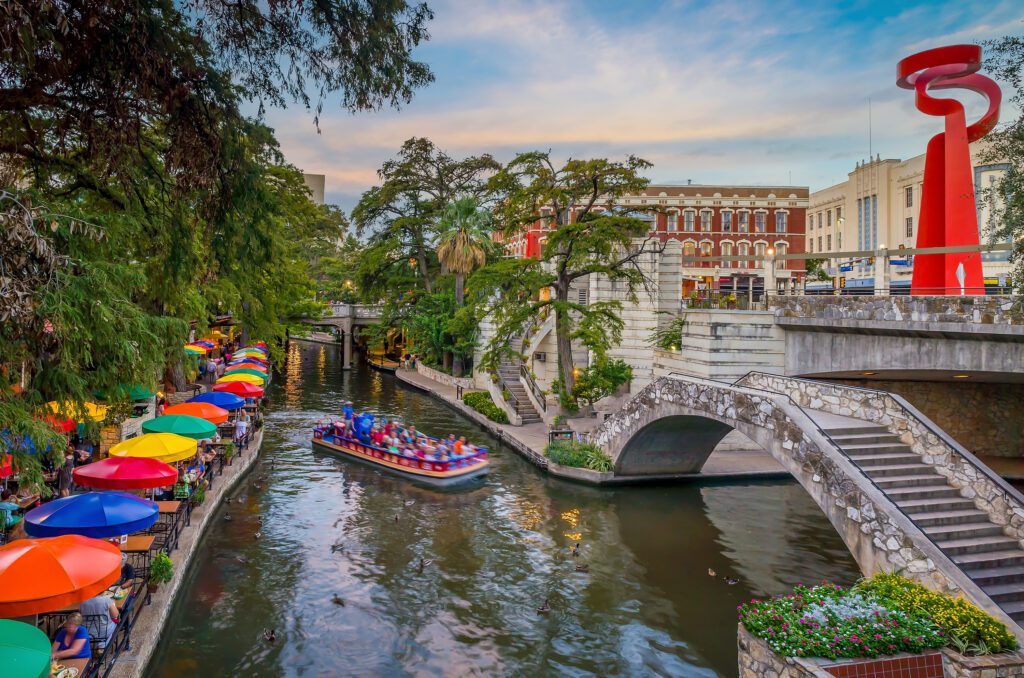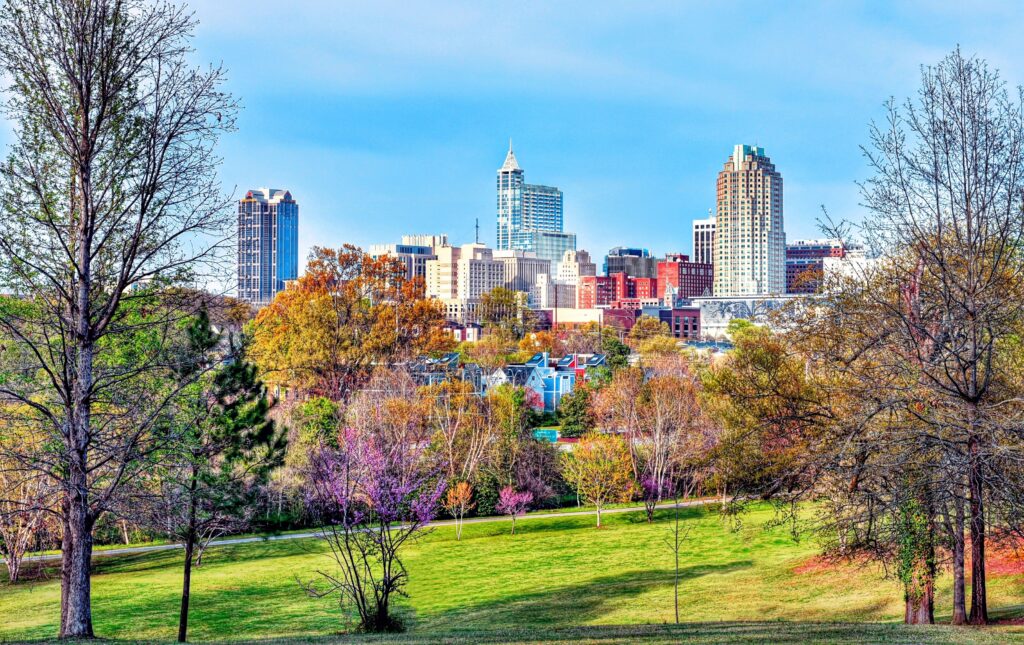- Home Moving
- 8 Min Read
Where Are People Moving to in 2025? Top Relocation Trends
-
Share

TL;DR: In 2025, Americans are mainly moving to fast‑growing Sun Belt and secondary markets like Florida, Texas, North Carolina’s Research Triangle, and Colorado’s Front Range, drawn by job growth, lower taxes, more affordable housing, and warmer, outdoor‑focused lifestyles.
The American landscape is undergoing a significant transformation as we move into 2025, with migration patterns revealing deeper shifts in how and where people choose to live. Recent data from the U.S. Census Bureau shows that approximately 8.2 million Americans moved between states in 2022, with nearly 26.5% of Americans indicating they are definitely or very likely to move in 2025. This massive population shift is reshaping communities, economies, and the very fabric of American society.
In this article, you’ll learn where Americans are moving in 2025, what’s driving those moves, and how these trends can guide your own relocation plans.
The Sun Belt Surge: Florida Leads the Nation
Florida’s emergence as America’s premier destination for relocators in 2025 represents a seismic shift in American demographics. As cities like Fort Myers witness an extraordinary 6.73% population surge from net migration between 2021 and 2022, the Sunshine State’s allure cuts across powerful demographic lines.

Economic Drivers
The state’s economic landscape has evolved far beyond its traditional tourism and retirement base. Major corporations are establishing a significant presence across Florida’s metropolitan areas, particularly in the technology and financial sectors. Cities like Tampa and Miami are emerging as serious contenders in the financial technology space, while Orlando continues to diversify beyond its tourism roots into healthcare and aerospace.
The absence of state income tax remains a powerful draw, but it’s the broader economic ecosystem that’s sustaining growth:
- Robust job creation across multiple sectors, with particularly strong growth in technology and healthcare
- Growing venture capital investment in Florida-based startups, especially in Miami’s emerging tech scene
- Expansion of international trade relationships through Florida’s ports
- Development of technology corridors, particularly in the Tampa-Orlando axis
- Significant growth in professional services and financial sector jobs
Lifestyle and Quality of Life
Florida’s appeal goes beyond economics, offering a distinctive quality of life that’s increasingly attractive to various age groups:
- Year-round outdoor recreation opportunities, from beaches to state parks
- Diverse cultural amenities, including world-class museums and performing arts centers
- Multiple professional sports teams and entertainment options
- Growing educational institutions and research centers
- Varied housing options, from urban condos to suburban communities
- Strong healthcare infrastructure with world-renowned medical facilities
Infrastructure Investment
The state is actively preparing for its growing population through significant infrastructure initiatives, like:
- Major transportation projects, including high-speed rail connections between major cities
- Expanded airport capacity and modernization at multiple hubs
- Investment in resilient coastal infrastructure to address climate concerns
- Development of sustainable water management systems
- Growth in renewable energy infrastructure
- Enhanced public transportation systems in major metropolitan areas
Texas: The New Economic Powerhouse
Texas’s position as a popular destination state reflects its emergence as a major economic force. The state’s growth story is more nuanced than many realize, with multiple factors contributing to its increasing popularity.

Economic Diversity
Unlike previous boom cycles tied primarily to energy, Texas’s economic metamorphosis spans diverse sectors, positioning the state as a powerhouse of innovation and industry. Austin’s evolution into a thriving tech ecosystem draws both nimble startups and industry titans, while Tesla’s Gigafactory leads a wave of advanced manufacturing investments. The Texas Medical Center stands as the world’s largest medical complex, driving biotechnology breakthroughs and healthcare advancement.
The state’s energy landscape also bridges traditional oil and gas expertise with ambitious renewable projects, particularly in wind and solar development. Wall Street firms continue their southern migration, establishing major financial operations across Texas metros, while space technology companies cluster around Houston and Austin, strengthening the state’s aerospace footprint.
Housing Market Dynamics
Texas’s housing market stands as a compelling draw for newcomers, fueled by vast tracts of developable land that enable continuous suburban growth. Flexible zoning laws accelerate development timelines and foster diverse housing styles, while median home prices are around 20% lower than the national median.
Dynamic rental markets thrive across major metros, complemented by robust new construction in emerging neighborhoods. The state also offers living spaces for every lifestyle, from sleek urban apartments to expansive suburban estates, while master-planned communities blend residential comfort with resort-style amenities.
Metropolitan Diversity
Each major Texas city offers distinct advantages and opportunities:
- Austin: Technology and cultural hub with a strong appeal to young professionals
- Dallas: Corporate headquarters and financial services center
- Houston: Energy, healthcare, and international trade hub
- San Antonio: Military, healthcare, and tourism center
- Fort Worth: Manufacturing and logistics hub
- Emerging markets in cities like Frisco and Round Rock also offer new opportunities
The Rise of Secondary Markets
One of the most significant trends of 2025 is the increasing popularity of secondary markets, particularly in states like North Carolina, Georgia, and Colorado. These markets offer a compelling combination of economic opportunity and quality of life.
North Carolina’s Technology Triangle
The Research Triangle pulses with economic vitality, anchored by its booming technology and life sciences sectors. Elite research universities power innovation and cultivate top talent while offering the region’s workforce significant cost advantages over traditional tech hubs. Residents enjoy a rich quality of life, balancing urban amenities with abundant outdoor recreation.

The region’s cultural scene continues to evolve, bringing world-class entertainment and dining, supported by premier healthcare facilities. A flourishing startup ecosystem attracts entrepreneurs, while the area’s unique geography provides easy access to both mountain adventures and coastal escapes.
Colorado’s Front Range
Colorado’s Front Range also emerges as a powerhouse urban corridor, blending cutting-edge technology and aerospace innovation with unmatched outdoor amenities. From Fort Collins to Colorado Springs, a vibrant entrepreneurial ecosystem flourishes alongside world-class recreation opportunities.

The region’s strategic position enables efficient logistics operations, while its commitment to renewable energy drives sustainable growth. Prestigious educational institutions and research centers nurture talent, all set against a backdrop of legendary skiing and mountain adventures that define the Colorado lifestyle.
Remote Work’s Continuing Influence
The persistence of remote work continues to reshape migration patterns in fundamental ways.
New Work Patterns
The workplace is shifting to hybrid models where employees split time between office and remote work. Companies now offer flexible location policies while maintaining collaborative spaces. This transition has led to the rise of satellite offices and co-working spaces in residential areas, with employees increasingly prioritizing home office space in their housing choices.
Infrastructure Requirements
Remote work is also driving demand for:
- High-speed internet infrastructure
- Better cellular coverage in suburban and rural areas
- Local amenities supporting work-from-home lifestyle
- Community spaces and social hubs
- Enhanced delivery and service infrastructure
- Technology-enabled housing developments
Demographic Shifts and Market Impact
The wave of migration across America isn’t uniform: it’s a generational mosaic, with each age group showing distinct patterns and preferences that profoundly impact local housing markets and community development.
While affordability remains a universal concern, different life stages and priorities are creating unique migration patterns that ripple through the real estate market. Understanding these generational differences is crucial for predicting where and how communities will grow, what kinds of housing will be in demand, and how local economies will evolve.
Millennials (30-44)
- Highest likelihood of interstate moves
- Most likely to move for political views
- Focus on family-friendly communities
- Strong interest in suburban locations
- Emphasis on school quality
- Preference for larger homes with office space
Gen Z (18-29)
- Growing interest in emerging markets
- Strong focus on affordability
- Preference for walkable communities
- Interest in environmental sustainability
- Attraction to cultural amenities
Gen X (45-60)
- Most definitive moving plans
- Focus on long-term investment potential
- Interest in downsizing opportunities
- Emphasis on healthcare access
- Consideration of future retirement locations
Baby Boomers (60+)
- Least likely to relocate (54% have no moving plans)
- Strong preference for established communities
- Focus on healthcare accessibility
- Interest in maintenance-free living options
- Emphasis on climate and weather conditions
Economic Impact
Mass migration to new regions is creating significant economic ripple effects. Housing markets in destination areas are experiencing sharp price increases and surging demand for new construction, particularly planned communities and rental properties.
This population shift is transforming local economies by altering tax revenues and spurring growth across multiple sectors. Communities are also seeing expansion in service businesses, retail centers, and essential infrastructure like healthcare facilities and schools to accommodate the influx of new residents.

Looking Ahead: Future Trends
As we move through 2025, several factors will continue to shape migration patterns.
Economic Factors
- Federal Reserve policy impact on mortgage rates and business lending
- Remote work opportunities and hybrid job market evolution
- Real estate affordability and inventory levels across regions
- State income, property and business tax differentials
- Regulatory costs and ease of business formation/operation
Quality of Life
- Rising temperatures and natural disaster frequency by region
- Access to high-performing school districts and universities
- Healthcare facility quality ratings and specialist availability
- Arts, entertainment and dining scene development
- Crime rates and public safety metrics
Infrastructure
- High-speed rail and airport connectivity projects
- Gigabit fiber networks and 5G coverage maps
- Renewable energy adoption and grid reliability
- Watershed management and drought mitigation plans
- Parks, libraries and community center investments
The migration patterns of 2025 represent more than just population movement – they reflect fundamental changes in how Americans live, work, and build communities. As these trends continue to evolve, they will shape the future of American cities and regions for decades to come.
For those considering a move in the next year, understanding these broader patterns can help inform decisions about where to relocate. The key is to consider not just current conditions but long-term trends that will affect quality of life, economic opportunities, and community development in potential destination areas.
BMS Moving & Storage has been helping families move nationwide since 1936, so you can trust our licensed, insured team to handle your move to any of 2025’s fastest‑growing destinations.
Sources:
United States Census – About 8.2 Million People Moved Between States in 2022
Sun Sentinel – As COVID rolled on, legions of companies migrated to Florida. Which metro areas gained the most?
FDI Intelligence – From tobacco to tech: North Carolina triangle’s renaissance



